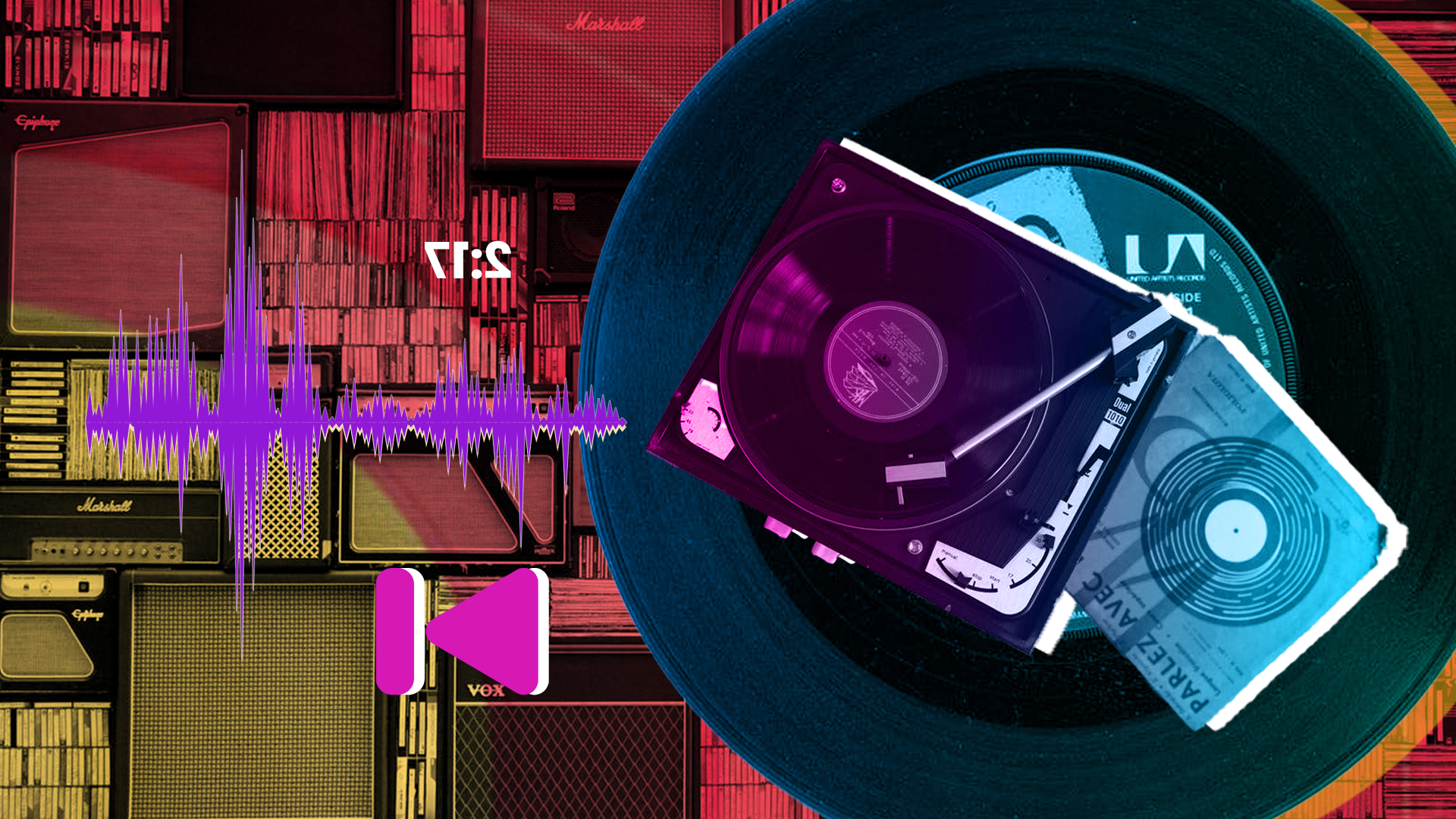Creepy, demonic, scary, and odd. These are few but precise words that are used to describe backmasking, a technical effect that usually happens when vinyl records of the past are played in reverse and reportedly bring forth enigmatic and subliminal audio messages—whether or not they were deliberately placed on it. Backmasking is a process of reversing an audio signal and placing it in something meant to be played forwards. When played normally, the message will sound like a normal music. However, once the song is played in reverse, subliminal messages can be heard. Remember, these covert messages on records could only be heard when it is played backwards.
Backmasking traces its roots as far back to 1877 when Thomas Alva Edison, inventor of the phonograph and the incandescent light bulb printer among other things, noticed how music had a reverse sound and call it “novel and sweet but although different”. Soon, the 50s saw avant-garde musicians started to purposely include reverse audio into their music. As a controversy, backmasking peaked in the 70s and 80s but satanic backmasking persisted in the US during the 90s because some Christian groups alleged how backmasking was being used by renowned rock musicians for satanic purposes, leading to record-burning protests.
Veiled messages in music come in different forms, and one that has been deliberately placed onto the record (for enhanced musical effect) usually by the recording studio is called “backward masking” while “backmasking” is the term used when messages are not deliberately put into a record but has rather formed into cryptic words which can be discovered or heard when played backward. Both can be collectively referred to as backmasking. In backmasking, our brain uses the wave form and changes in volume and other aspects of a sound to extract musical information. When it is listened in reverse, the lack of familiarity with the sound structure makes it sound frightening, strange, and even diabolic.
And perhaps one of the first controversial backmasking was the Beatles’ Revolution 9 song where “Paul’s a dead man” could be heard when one of the songs was played in reverse. So, can we thank the Beatles for moving the technique of backmasking into the mainstream? And do you know what really skulks behind the rearward grooves in Led Zeppelin’s Stairway to Heaven? It was reported that in the 70s and 80s, phrases like “here’s to my sweet Satan,” “serve me,” and “there’s no escaping it” were decoded in 1981. Because of these, the obsessed Christian groups during that time immediately labeled iconic rock bands like Queen, Kiss, and Styx indeed have a repertoire of evil music!

Other examples soon surfaced like John Lennon’s How Do You Sleep (hidden message: “Hey poor Lindy. So mean, gets him nowhere”), Marilyn Monroe’s I’m Gonna File My Claim (“He’ll come out, full of magic”), the Beatles’ famous Help (“Now he uses marijuana”), Judas Priest’s Beyond the Realms of Death (“I took my life”) and even Elvis Presley’s It’s Now or Never (which had the hidden message: “They know I’m sick”).
Filipino alternative and rock bands in the 90s haven’t been exempted from the controversy. Songs like Awit ng Kabataan by River Maya, Bogchi Hokbu, Overdrive, and Alapaap by Eraserheads, are few of the examples. And even though no proof has been published as to what the concealed messages are, OPM fans are quick to defend their favorite iconic bands. A certain netizen said: “Parang clouds lang yan eh. Kahit na ano’ng imahe pwede mong makita sa clouds. Ganun din sa backmasked song. Kung minsan kung ano ang gusto mong makita o marining yun ang lumalabas. kahit Alphabet song pag binaligtad mo may kakaiba eh” (It’s just like cloud formations. Any image you wish to see in it, that’s what you will see. Even simple ones like the Alphabet song, when you reverse play it, there would probably be a secret message). Another netizen who is a home recording artist revealed that when he tried backmasking his songs, he cracked up because out of the art of music in its clean form, nothing bad is ever intended.

Audio Engineer Evan Olcott claims that backmasking or finding phonetic reversals is purely coincidental in which the spoken or sung phonemes form new combinations of words when listened to backwards, and most of the time we tend to associate these sounds with words in our vocabulary to form a sentence or a message. So, we totally get Olcott with this when he pointed out that it is next to impossible to write a song that says something forwards as well as backwards.
We know that another theory has sprung from the concept that these are actually satanic message hidden within a song. Really? Actually, this backmasking-satanism connection can be traced to a 1913 book by occultist Aleister Crowley who recommended that those fascinated in black magic would do well to learn how to think and speak backwards stating that in the Middle Ages, witches used to pray the Lord’s Prayer backward. This sounds kind of sinister…but uhhhh, extremely difficult to do.
Perhaps the more plausible, although somewhat radical, theory for backmasking is that these messages are actually a small part of a far greater phenomenon known as Reverse Speech. The theory of reverse speech states that language is bi-level, forwards as well as backwards, a natural function of the human brain. As the brain creates the sounds of speech, it creates them in such a way that dual messages are spoken at once. Forward, words are spoken from the conscious mind and backwards, from the unconscious mind. The unintentional back-masked messages in music were the first signs to be discovered of this phenomenon.
Countless artists over the years were alleged of backmasking, but none of them were ever proven to be satanic. These accusations sprang forth from a mere mass paranoia coming from the disturbed imagination of some religious sect who started to battle a genre they were unacquainted with. The phenomenon became so popular, it was parodied countless times by pop culture because the reverse versions seemed cool. But despite all of these controversies, backmasking continued in different medium and in fact, the first back-masked video was released as part of a Grammy award promotional campaign launched in 2014.
While most people—Christian or not—found all this rather rubbish, these concerns did indicate more prevalent fear that sometimes it is merely the media trying to play its side role as the subliminal wizard of fiction. It is up to us and our discerning imaginations to judge whether it is our rock icons or Satan sending a message to us. Or perhaps our minds are merely trying to articulate the demons that are already within.
Other POP! stories you might like:
Framing Britney Spears: Not a girl, not yet a free woman
Breaking down ‘Titibo-tibo’ and other anti-LGBTQ OPM songs
Tommy Hilfiger is trending because people didn’t know he’s a real person
Lonely in quarantine? Filipino woman offers rental girlfriend services
Ed Sheeran makes a rare appearance after taking a music break



